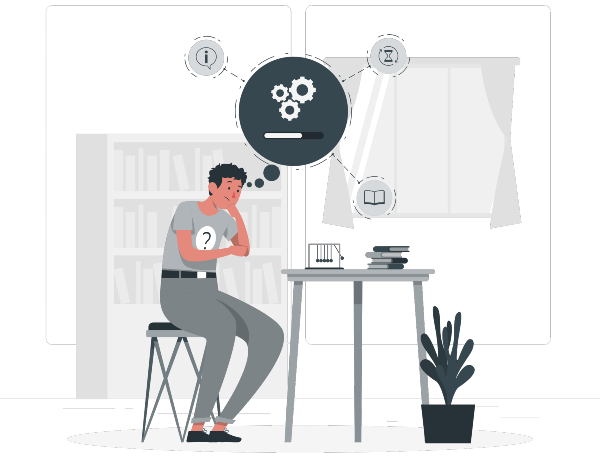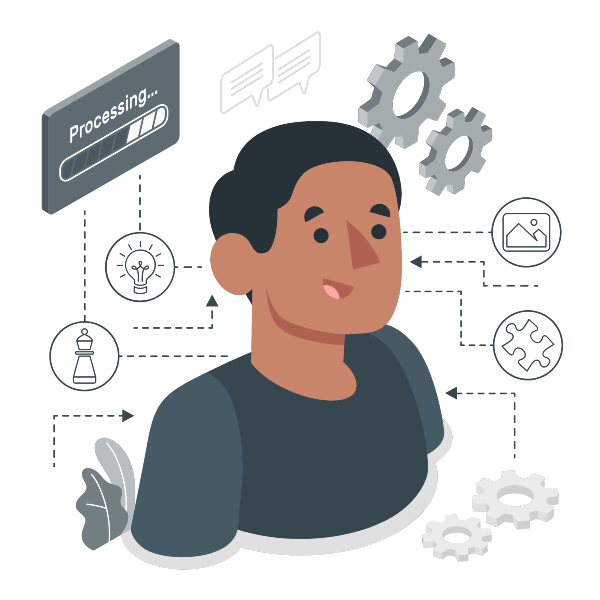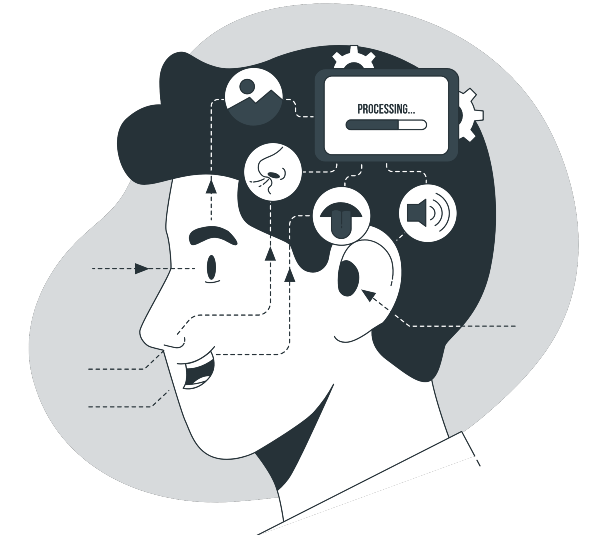RankBrain is the third most important ranking factor in Google. And this guide describes everything we need to know about the Google RankBrain algorithm.

Google RankBrain Guide Content:
CHAPTER 1: What is Google RankBrain?
CHAPTER 2: How RankBrain Works
CHAPTER 3: Keyword Analysis, in the World of RankBrain
CHAPTER 4: How to Optimize Titles and Meta Descriptions to Improve CTR (Click-Through Rate)
CHAPTER 5: How to optimize content to reduce bounce rate
CHAPTER 6: Bonus: Optimization strategies and case studies with RankBrain
Chapter 1: What is Google RankBrain?
RankBrain is a machine learning (AI) algorithm used by Google to sort search results, but it also helps process and understand search queries.
Why is RankBrain different?
Before RankBrain, 100% of Google's algorithm was coded by hand. Of course, Google engineers are still working on the algorithm, but RankBrain optimizes the algorithm on its own.
Depending on the keyword entered in the search box, RankBrain will increase or decrease the importance of backlinks, content freshness, content length, domain authority, etc., after which it analyzes how Google searchers interact with the new search results, and depending on this, either the new algorithm remains or RankBrain reverts to the old algorithm.
The identification of the best page from a search has been tested by both Google engineers and RankBrain. RankBrain beat the engineers by 10%!
In short, RankBrain works. Let's see how next.
Chapter 2: How does RankBrain work?
RankBrain has two main functions:
- Understands search queries (keywords entered in the Google search box);
- It measures how people interact with the results (ie user satisfaction).

Let's describe each of these:
How does RankBrain understand any searched keyword?
A few years ago, Google had a problem: 15% of the keywords searched on Google had never been seen before.
15% doesn't sound like much, but when billions of searches are processed per day, the figure is up to 450 million keywords, daily.
Before the advent of the RankBrain algorithm, Google scanned pages to see if they contained the searched keyword, but as they were new, Google had no idea what the searcher wanted. So he was trying to guess.
For example, for "gray console developed by Sony", Google would search for pages containing the terms "gray", "console", "developed" and "Sony".
Azim RankBrain understands what you are looking for and provides a 100% accurate set of results.
What is the difference?
Before, Google tried to match words in the query with words on a page. Today, RankBrain tries to figure out what is wanted. How? By matching keywords that Google has seen before.
For example, Google RankBrain noticed that many people searched for "Nintendo gray console" and guessed that they wanted to see a set of results about game consoles. So when someone searches for "gray console developed by Sony", RankBrain returns similar results to what they already know ("gray console developed by Nintendo"). This is what the console results look like: in this case, PlayStation.
Some time ago, Google reported on how it uses machine learning to better understand searcher intent. He was describing a technology called "Word2vec" that turns keywords into concepts.
For example, Google states that this technology "understands that Paris and France are related in the same way as Berlin and Germany (capital and country), and not the same as Madrid and Italy".
RankBrain probably uses similar technology, even if it was not mentioned at the time.
How does RankBrain measure user satisfaction?
Sure, RankBrain can still struggle to understand new keywords, but it can even decode its algorithm on its own.
But the important question is: once RankBrain presents a set of results, how does it know if they are, in fact, good? Well, by observation. If more people prefer a particular page that appears in the search results, then it will, over time, enjoy improved positions in the ranking. If not, that page will be replaced with another one, and the next time someone searches for that keyword (or a similar term), RankBrain will see people's reactions again.
But what does RankBrain notice?
How people interact with search results, namely:
- Organic CTR (click-through rate).
- How deep the user navigated the website
- Bounce rate
- Pogo-sticking.
These are UX signals.
Let's say you strained a muscle while playing tennis. So you google pulled muscle."
You click on the first result, but you see that the article is full of filler content, so you press the "back" button. You choose the second result, but it's not good either. Go back, press the third result, and bingo! you found exactly what you were looking for. That's why you didn't go back to the results list, and for Rank Brain, this means that the page you stopped at is valuable and Google raises it to the top.
Back-and-forth actions mean "Pogo-sticking". If Google notices that people are quickly leaving a page to click on another search result, it sends a strong message to Google: "The page is not of good quality!"
Conversely, if Google notices that a lot of people stop pogo-sticking on a certain result, it will give the page a boost to the top, to make it easier to find.
Chapter 3: Keyword Analysis in the World of RankBrain
So Google can now understand the INTENT behind a keyword. This means we'll probably need to optimize our keyword analysis process so that it's more RankBrain-friendly.
But how? By ignoring top long-tail keywords (they are outdated).
For example, you could create a page optimized for "best keyword research tool" and another optimized for "best keyword analysis tool". And the old Google would have ranked each of them for those long keywords.
Today, RankBrain already understands that these terms are essentially the same thing and show almost identical search results.
What to do in this case? Optimize for medium keywords
They get, on average, a higher search volume than the long ones. But they are not mega-competitive either.
For example, here is a set of keywords around the theme "Paleo Diet". Middle terms are medium-length keywords. When we optimize the page around an average keyword (and make it a great page), RankBrain will automatically rank the page for that term...and thousands of similar keywords.
An example of on-page SEO in the world of RankBrain?
Let's say I wrote an article about all the SEO tools you've ever used. The mid-tail keyword used is SEO Tools.
Most importantly, RankBrain understands that the page refers to concepts such as: "SEO tools", "SEO software", "SEO analysis tools", etc.
As a result, this page alone could rank for thousands of different keywords.

Chapter 4: How to Optimize Titles and Meta Descriptions to Improve CTR (Click-Through Rate)
As we saw in Chapter 1, organic CTR is an important ranking signal for RankBrain.
But how do we get people to click on our results?
We pack titles with emotion. They attract more clicks.
Copywriters have known this for years. And recently concrete data have appeared that reinforce this fact. CoSchedule found a clear correlation between highly emotional headlines and social shares.
Let's compare 2 titles: Productivity Tips: How to Get More Done and Destroy the To-Do List with These 17 Productivity Tips.
At first glance, they are the same, but only the second has that "wow" that makes people go to the article. At the same time, it is kept SEO-friendly.
Of course, it doesn't always make sense to create extremely emotional titles. But, whenever possible, it is also welcome.
We add round and square brackets at the end of the titles.
In a study a few years ago by HubSpot and Outbrain, 3.3 million titles were analyzed. Those with brackets exceeded those without brackets in the click rate by 33%.
Types of brackets used would be:
- (2023)
- [Infographic]
- (New information)
- [Report]
- (Case Study)
- (Proven tips).
We sprinkle powerful words in the title tags:
Precisely because they have a serious emotional impact, they stand out more and, respectively, attract more hits.
Here is also a list of powerful words:
- Effective
- Case Study
- Example
- PROVEN
- Study
- New
- Strong.
Don't forget to optimize the meta descriptions for CTR (to increase the click rate)
Yes, meta descriptions don't directly help us with SEO. However, an optimized description can significantly increase the value of the CTR.
How do we create meta descriptions that deliver results?
- We add emotion to the description. Exactly as in the title.
- We sell WHY someone should access our result. Is our content understandable? Based on studies? Funny?
- We copy words and phrases used in paid advertising (from Google Ads) and include them in the meta description.
- Finally, we include the target keyword. Google will highlight it.

Chapter 5: How do we optimize content for a low bounce rate?
OK, we've applied the above CTR tips, now more people than ever are clicking on our result, but how do we show Google that this result makes users happy?
We increase the time spent on the page. This is the time a Google searcher spends on our site after clicking on our result.
The more someone spends on your page, the better it is for Google, which moves it higher in search results. But if people leave the page after less than 2 seconds, Google demotes it by a few positions.
So it makes sense that RankBrain measures time spent on the page.
So how do we reduce the bounce rate and increase the time spent on the page?
- We bring the important content as high as possible on the page: when someone clicks on our site from Google, they want an answer to their question NOW. They don't want to scroll down to read too much content. That's why we remove everything that pushes the content down and brings the text up.
- We use short introductions (5-10 sentences MAXIMUM): they help the reader in 90% of cases to decide to stay or... to leave. Simple: the one who searches for something in Google already knows about this topic. No massive introduction is needed. Instead, we use the introduction to sell the content below.
- We publish long, comprehensive content. Longer content = more time spent on the site. In addition, it can fully answer the search query. At least 2,000 words are required for a good ranking. For example, let's say we search for "how to run a marathon". We have a result with 300 words and another with a longer description. Which one do we choose? The second one, as it contains a comprehensive guide that covers everything you need to know about running a marathon. We break the content into smaller pieces: reading 2,000 words in one sitting is difficult. Fortunately, there are subtitles, which we can use elegantly. This improves readability and therefore page navigation time. More precisely, we distribute 200 words of content in each subchapter.â
Pro Tip: Avoid boring nicknames like "Lapel Drills" or "Stay Hydrated." Instead, pack them with emotion. For example: "3 lapel drills the pros use" and "What new studies say about the need to stay hydrated".

Chapter 6: Optimization strategies and RankBrain case studies
If someone knows your brand, they are more likely to click on your website in search results. Data from WordStream found that brand awareness can increase CTR by up to 342%!
How do we increase brand awareness and improve CTR?
- For starters, we're trying out Facebook Ads. Even if people don't click or convert, Facebook ads can put your brand in front of many eyes.
- We create an extremely valuable newsletter. Nothing increases brand awareness like sending valuable content to your inbox.
- Finally, we do a "Content Blitz". A "Content Blitz" is where a lot of content is created in a short period. This is much more powerful than a little content throughout the year, such as posts on other people's blogs, podcasts, be co-authors of other articles.
- We turn "Zeros" into "Heros" (we turn pages with 0 traffic into heroes): if a page on the site is not performing as expected, we can optimize it for RankBrain, and thus give it a significant increase in ranking. This primarily refers to the title tag of the page, which may not be that attractive to click on. But after adding a number, a strong word, and brackets, the traffic can increase. That is, RankBrain noticed the increase in CTR... and raised the page in searches.
- We use LSI (Latent Semantic Indexing) keywords to fill in the "Content Gaps". LSI keywords are words and phrases related to the main topic of the content. They give RankBrain the context it needs to fully understand the content of the page. For example, for a guide on building backlinks, the LSI keywords are:
- Backlinks
- Domain authority
- Sending of e-mails
- Anchor text.
Now you too are ready to optimize your site for RankBrain! Good luck!


